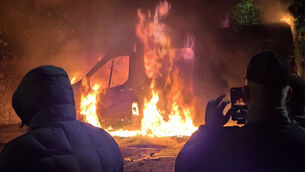Report queried Air Corps staff safety efforts

The document states it is possible staff may have ingested the chemical and suffered other exposures because there was no record that protective measures were in place to mitigate the impact of the toxic solvent.
The time under review in the report — 1980 to 2007 — coincides with the period during which a number of Air Corps staff who are suing the State would have worked at Casement Aerodrome, Baldonnel.
It is understood the document was prepared for the State Claims Agency, who is defending the case in the High Court.
The report, seen by the Irish Examiner, investigates the working environment in a since-demolished engine workshop building and was published over two-and-a-half years before the Health and Safety Authority raised a number of concerns about conditions in Baldonnel.
In its summary on precautions taken with the Triklone N solvent, the report issued by the Air Corps’ Formation Safety Office asks “can the Defence Forces be found not to have done everything reasonably practicable?”.
Triklone N contains trichloroethylene, a known carcinogen, and is a vapour degreaser that was used to clean engine parts.
The report stated that:
- No records show that personal protective equipment (PPE) was made available to staff.
- No records exist suggesting that any training on the dangers of using Triklone N took place.
- Work areas were not segregated and doors to adjoining areas were left open.
- Workers’ tea room and meeting area were located in an adjoining area, raising the risk of food being contaminated.
- Workers clothes could have been contaminated as personnel lockers were located in the immediate area where the chemical was used.
No records exist that indicate that the extractor fans in use in the workshop were adequate for ventilating the area.
The report also raises concerns about a heater in the engine assembly area, which it states would have caused a risk of contaminating other areas of the same building by circulating the chemical.
“Due to the fact that Trikelone N expands when heated, the risk of explosion increased when the Trikelone N contaminated air passed through the heater,” it states.
The report concludes by asking if enough was done to protect staff from identified risks. “The question posed should be: Was everything reasonably practicable done to ensure personals safety and health at the time?”
The report states the Air Corps discontinued the use of Triklone N in September 2007.
The Department of Defence declined to comment on the 2014 report’s findings.
“As you will be aware, the State Claims Agency is currently managing six claims, taken by former and current members of the Air Corps.
“The matters you have raised are currently the subject of ongoing litigation and it would be inappropriate to comment further at this time,” the Defence Forces said.












